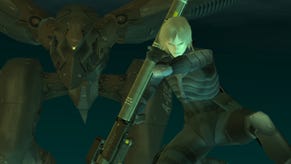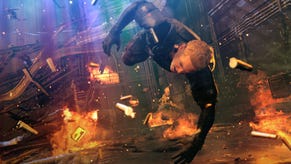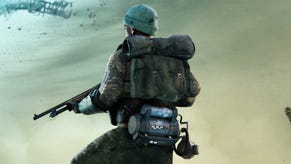Metal Gear Survive Review
Konami looks towards of a new frontier for the Metal Gear franchise.
This article first appeared on USgamer, a partner publication of VG247. Some content, such as this article, has been migrated to VG247 for posterity after USgamer's closure - but it has not been edited or further vetted by the VG247 team.
For the life span of the franchise, Metal Gear has been defined by the vision of Hideo Kojima, the designer of the first title back in 1987. When Kojima left Metal Gear series publisher Konami in 2015, fans wondered if the series would be even worth continuing without him or if publisher was going to continue at all. The answer to the former question is still up in the air, but the answer to the latter is this game: Metal Gear Survive.
Survive isn't a primary Metal Gear title. It's a different spin on the material, much like Metal Gear Rising: Revengeance, the last project from Survive producer Yuji Korekado. Instead of another stealth action epic, Metal Gear Survive re-envisions the franchise as a survival game, similar to Rust, Ark, or Don't Starve. In a harsh apocalyptic landscape, you have to establish your own Outer Heaven. From your base of operations, you strike out in this world to rescue fellow soldiers, find out the truth of this world, and ultimately... survive.
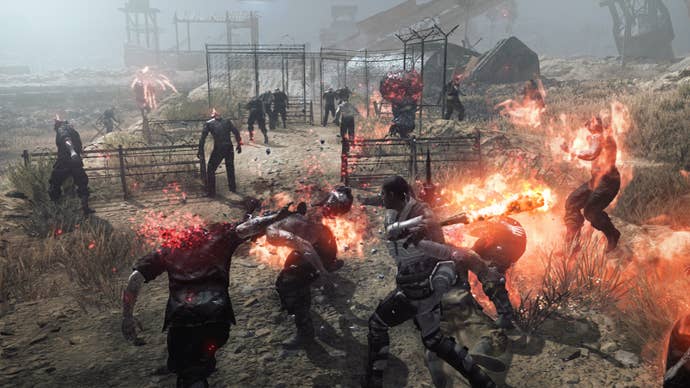
The Long Lost Brother
I previously dived into the game's multiplayer mode in my open beta impressions. At the time, I noted that while the sole multiplayer mode was enjoyable, the game overall didn't feel like Metal Gear Solid. With some time logged into the single-player mode, I can say this feels more like Metal Gear Solid V's online mode split out and built upon.
The opening hours of Survive are surprisingly cutscene and tutorial heavy. The game's events take place sometime between Metal Gear Solid V: Ground Zeroes and Metal Gear Solid V: The Phantom Pain. During the XOF attack on Mother Base, you prove yourself as the soldier who takes down a mercenary who was about to kill Big Boss. Here's where everything gets weird: part of the wreckage of Mother Base is sucked into a wormhole, with the exception of your created soldier, who drops into the ocean and dies.

Except you don't die, because of a mysterious infection. You're revived by the Wardenclyffe Section, a secret arm of the U.S. government (what else?) who has an offer. They've known about dimensional travel since the Philadelphia Experiment in 1943 and weird crystalline attackers called Wanderers have appeared occasionally in conflicts since then. The Section sent a group of soldiers and scientists over to the alternate world these creatures come from, but they never came back. They have enough energy to send your infected soldier over. Your job: find the Charon Corps and recover their data, which might also include the cure for your condition.
It's played horribly straight, which feels totally "Metal Gear" to me. I wouldn't be surprised if the mysterious infection that revived you and creates the Wanderers is actually a highly advanced form of nanomachines, but that's the kind of nonsense I expect from Metal Gear Solid.

What Do You Hunger For?
You start with nothing but a crafted spear and a wrecked base. From there you have to explore outward, collecting resources to build bigger and better things, finding research related to crafting and the game's story, and generally hunting to keep yourself alive. While stealth is negligible in the multiplayer mode, it's quite useful in single-player, where you'll have to sneak into compounds full of Wanderers to collect things. You can go in guns ablaze, but bullets use up precious resources. Even melee against a large group of Wanderers isn't recommended; melee swings have a commit time and you lack a dodge of any sort, so multiple Wanderers can quickly chip away at your life.
In my multiplayer impressions, I highlighted hunger and thirst, which appeared as mechanics in the cooperative mode, but didn't have any real meaning. In single-player though, they're everything. Hunger and thirst are seperate meters that count down from 100 percent. Drink water or eat stew and your thirst is taken care of. Eat raw or cooked food to tackle your hunger. Your current level of hunger and thirst affect your maximum health and stamina respectively. At 31 percent hunger, your health is capped at 31 percent of its maximum total. At 20 percent thirst, you only regenerate stamina to 20 percent.

You can't run or sneak without stamina and health is important for surviving attacks. The problem is that Konami has tuned these mechanics entirely too tight. You lose 1 percentage point every 30 seconds or so, even when you're standing still or crafting at a bench. Hunger and thirst lower so quickly when going on a mission that the upkeep feels like busywork. Things get better once you upgrade your base in later chapters to produce clean water and farm food, but early on, it's a literal death march.
This is a case where I like the basic idea of Metal Gear Survive's single-player mode, but have issues with the tuning. I don't have a problem with survival mechanics, but Konami needs to pull the throttle back a bit. Survive's hunger system feels more punitive than games like Ark, Minecraft, or Don't Starve to me.
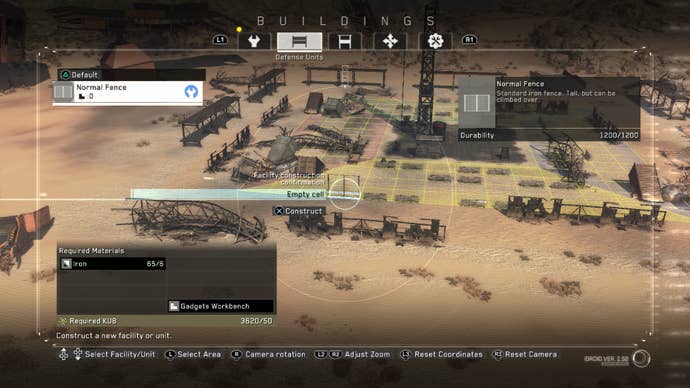
Objects Are Harder Than They May Appear
I'll also note that Metal Gear Survive's closed and open beta phases were not entirely indicative of the final product. Multiplayer is largely the same in terms of mechanics, but it's much harder than its beta counterparts. In beta, the level of enemies in the Easy mode was much lower; I wouldn't recommend jumping into multiplayer for the retail release until around Level 18-20. I popped in for one match and we only survived two waves before the team called it a day.
I'm also surprised to find multiplayer isn't quite the primary focus I thought it would be in the beta. Oddly enough, resources are shared between both modes and you lack a combined stash as a team, so the opening moments are more of a vicious Black Friday shopping spree than a team working together. Likewise, players are a more reticent to spend their resources on defense. I like the idea of bringing multiplayer spoils back to single-player, but again, there's some tuning needed to promote a coop experience
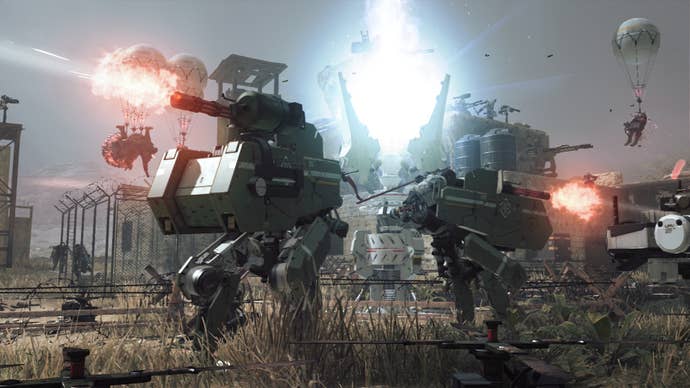
Final Thoughts
Sometimes over the course of playing a game for review, the experience will change and shift. New facets and mechanics will be revealed, leading to a different view on the game. Nier: Automata requires more than one playthrough to really hook you, Shadow of Colossus is made more meaningful by its ending.
For some games though, what you see is what you get. Metal Gear Survive is definitely one of the latter types. I spent the week with the game, just making sure there weren't late game changes or surprising twists to the story that would dramatically reframe everything I knew about it. That never happened. Sure, there were some interesting new enemies later on, but the game doesn't drastically change, you just have to be even more prepared to fight them.
Metal Gear Survive makes you feel like Batman, because everything is about prep time. The core loop of single-player is all about making sure you have enough cooked food, clean water, and crafted gear to make the longer journeys into the larger world. Base-building becomes increasingly important because you need help with all this preparation. You need your crew to farm for you so you have food and water ready for the next mission, because otherwise, you'll end up in this spiral of wasting food and water to find more of the same.
This is the hurdle that players have to leap over early in the game. It feels like a painful Sisyphean treadmill that you can never escape because the hunger and thirst meters drop so quickly. If you can push through, eventually you get upgrades like farms, boiling pots, and rain water collectors, but those early hours are like pulling teeth. Even after that stockpiling food and water for longer expeditions leads to those expeditions feeling like menu-driven busywork at times, where you have to stop every five minutes to drink and eat.
Despite that flaw, I found myself having fun as I gained the resources to tackle bigger tasks. Standing back and looking at the smooth-running base you've built and your array of equipment is a great feeling. Pulling off a tough expedition into the Dust is a tense affair, where you have to weigh the resources on hand with the potential rewards that might be out there.
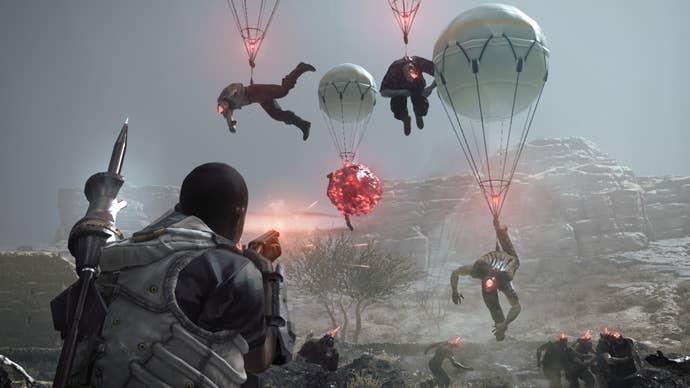
This Might Be Actual Survival Horror
The Dust really is the shining gem of Metal Gear Survive. In fact, it recalls another defunct Konami property, Silent Hill. The focus on your oxygen supply and the low visibility makes every thrust into the cloud a perilous task. The map stops working completely, only showing you the cardinal directions. You catch glimpses of horrors that are actually there and occasionally, hints of those that just might be. Here, Metal Gear Survive becomes probably the closest to what I'd actually call "survival horror". This is the game at its best, but those meters are still there, counting down too quickly and forcing you to open your menus, drawing you out of the experience.
What's interesting is that combat in single-player or multiplayer is more about exploiting the AI than your personal skill. Many times there are just so many enemies that it becomes all about baiting them into traps, hitting a group with the right amount of grenades or molotovs to soften them up, and then bringing them down with your melee weapon. Also, be prepared to use a ton of fences, as they keep zombies in one place and allow you to stab them from the other side. This is more "prep time", just in a different manner.
I noted in my earlier impressions that while Metal Gear Survive's multiplayer looked to be the focus in the open beta, it took a backseat to single-player in the final product. That feeling has remained as I've gone farther into the game. In fact, multiplayer is partially gated by your progress in single-player: if you're not finishing the campaign, you're actually holding yourself back. Multiplayer is completely in service to the single-player and offers two major things: additional resources and recipes, and the Staging Area, which is the only place in Metal Gear Survive where hunger and thirst are turned off. It's better to jump into the Staging Area to craft rather than doing it within your base, which feels like a cheat, but a useful one.
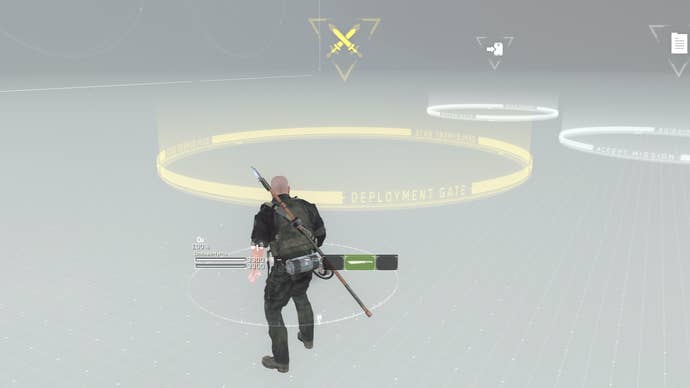
Konami needs to retune some aspects to make the moment-to-moment play a bit more enjoyable. I'd hazard a guess that part of the current tuning might be done in the hopes that players will dive into the game's microtransactions, which come in the form of boosts for Kuban Energy and resource collection. If you want to boost the production of food at your base, you can do that with microtransactions, which makes the tight tuning feel a bit suspect. There's a layer of that desire for your money simmering under the surface.
Ultimately, I like Metal Gear Survive. I wouldn't say it's a great game, as I still have some issues with the mechanics as illustrated above and the story is still Metal Gear nonsense. Still, it's probably better than it has any right to be. There's a framework here for a unique style of survival horror that I think Konami or some other studio should build upon. If you can hack it past the first 5-6 hours, there's a worthwhile experience here, which is more than I expected when I saw the game's first teaser trailer in 2016.
ConclusionMetal Gear Survive isn't a great game, but it is a fun game. Journeying into the Dust to find resources and survivors is a legitimately tense experience and your progress through the game feels satisfying. Unfortunately, hunger and thirst drop a bit too quickly, leaving you diving into menus for upkeep far too much of the time. With some tweaks and changes, Survive could be great, but as it stands, it's just good.


